(DURATION:-9 NIGHTS / 09 DAYS)
DAY 01: DELHI – BAGDOGRA BY FLIGHT BAGDOGRA – DARJEELING BY SURFACE 93 KM/3 HOURS
Breakfast at the hotel.
After breakfast transfer to the airport to board the flight for Bagdogra.
On arrival to Bagdogra transfer to Darjeeling by surface. On arrival to Darjeeling transfer to the hotel for check in.
DARJEELING:
Standing high in the Himalayas at an altitude of 2134m, ‘Dorje Ling’, or place of the Thunderbolt, offers breathtaking views of snow-capped mountain peaks, with the Kanchendzonga rising higher than all the others. Often referred to as the “Queen of the Hills”, it remains just as alluring with its tiny waterfalls, little villages and a narrow gauge railway track. Surrounded by World Famous Tea Gardens and snow capped mountains, Darjeeling remains one of the most exotic destinations. Graeme Westlake in his book ‘ An introduction to hill stations on India’ refers to Darjeeling as having “A view Scarcely Unrivalled on Earth”.
Overnight at the hotel.
DAY 02: DARJEELING
Breakfast at Hotel.
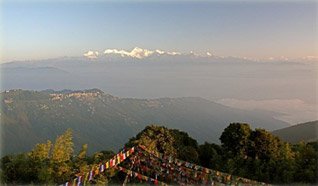 Early morning visit Tiger Hill and Ghoom Monastery.
Early morning visit Tiger Hill and Ghoom Monastery.
Tiger Hill: – It is 13 Kms from Darjeeling and one can see beautiful sunrise and Himalayan Range like Kanchendzonga, Mount Everest etc. One can see the horizon changing colors just before sunrise and then the entire Himalayan range turn golden. It is truly a majestic sight.
After breakfast proceed to the Darjeeling Railway station to enjoy World Heritage Toy Train ride up to Ghoom.
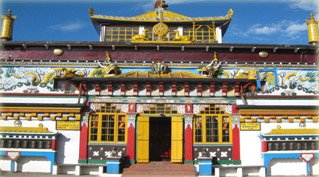 Ghoom Monastery:- This is oldest Monastery in the area which was built in 1875 and one can see the image of Mythey Buddha 15ft. height on the way back from Tiger Hill.
Ghoom Monastery:- This is oldest Monastery in the area which was built in 1875 and one can see the image of Mythey Buddha 15ft. height on the way back from Tiger Hill.
 TOY TRAIN – The spectacular landscape unfolds as the 2-foot gauge Darjeeling Himalayan railway, opened in 1881, labours at about 10 mph criss-crossing the road. It has tiny 4-wheel locomotives (some over 100 years old) like living legends. One can experience the sound, smell and romance of a bygone era. DHR is a work of genius and technological achievement of 1881. It has social and cultural importance. It is beautiful and has outstanding universal appeal. Based on its unique features, it is considered to be of lasting significance to mankind.
TOY TRAIN – The spectacular landscape unfolds as the 2-foot gauge Darjeeling Himalayan railway, opened in 1881, labours at about 10 mph criss-crossing the road. It has tiny 4-wheel locomotives (some over 100 years old) like living legends. One can experience the sound, smell and romance of a bygone era. DHR is a work of genius and technological achievement of 1881. It has social and cultural importance. It is beautiful and has outstanding universal appeal. Based on its unique features, it is considered to be of lasting significance to mankind.
Return to the hotel for lunch and Later proceed for city tour.
Himalayan Mountaineering Institute/Padmaja Naidu Himalayan Zoological Park: – (Closed on Thursdays). The Himalayan Mountaineering Institute was started in Darjeeling when Tenzing Norgay climbed Everest to give training to learn Mountaineering and other adventure sports related to mountaineering and in that Institute one can see equipment etc.used by Mr. Tenzing Norgay and EverestMuseum having complete details on Everest attached to institute one can visit HimalayanZoologicalPark where one can see Himalayan animals like Snow Leopard, Tibetan Wolf, Tibetan Yak, Himalayan Black Bear and several varieties of birds.
Tibetan Self- Help Centre Or Refugee Centre:- (Closed on Sundays) This institute is run by Tibetan Refugees to preserve their handicrafts and one can see making of Tibetan Carpets, Leather work, Paintings and Wooden work etc
Overnight at Hotel.
DAY 03: DARJEELING – PELLING 75 KM/4 HOURS
Breakfast in the hotel.
Later transfer to the Pelling.
PELLING
Located at a distance of 120 kms from GangtokPelling is another serene, mountain village which lies in the western districts of Sikkim. This village is situated at an altitude of 2000 mts(approx) and the distance from this village to the mount Kanchandzonga, as a crow flies…is 26 kms approx.
Afternoon visit PEMEYANGSTE MONASTERY.2.5 Kms. from Pelling and standing at 2085m. The Perfect Sublime Lotus, perched on a wooded hilltop, commands the most sublime view of the Khangchendzong.
Built during the late 17th century, it is one of the oldest and most important monasteries of the Nyingmapa order of Buddhism in Sikkim. To the present day, it is only the monks of this monastery who enjoy the title of ‘Tasang’ or pure monks. The importance of this monastery grew with time and reached its peak when only monks from this monastery could anoint the reigning sovereign of the land with holy water.
 Pemayangtse monastery follows the Mindroling tradition besides holding the lineage of LhatsunChenpo. Mindroling monastery was founded by MinlingTerchenGyurmeDorje whose famous daughter JetsunMigyurPaldon lived near Pemayangtse and taught there during her exile. Her stone throne is still to be seen in this monastery, which has 108 monks. The main attraction of the monastery is the wooden replica of ZangdogPalri; the celestial abode of Guru Padmasambhava built by SerdupLhundrupDorje Rinpoche in 1971. The annual chaam (monk dance) is held here on the 28th and 29th day of the 12th month of the Tibetan lunar calendar.
Pemayangtse monastery follows the Mindroling tradition besides holding the lineage of LhatsunChenpo. Mindroling monastery was founded by MinlingTerchenGyurmeDorje whose famous daughter JetsunMigyurPaldon lived near Pemayangtse and taught there during her exile. Her stone throne is still to be seen in this monastery, which has 108 monks. The main attraction of the monastery is the wooden replica of ZangdogPalri; the celestial abode of Guru Padmasambhava built by SerdupLhundrupDorje Rinpoche in 1971. The annual chaam (monk dance) is held here on the 28th and 29th day of the 12th month of the Tibetan lunar calendar.
Rabdentse– Sikkim’s second capital. The ruins of Rabdantse are worth exploring. The winding track through the forest brings you to a small set of ruins of the early town and eventually on the ruins of the palace with Chorten (stupa) nearby. Farther afield are the Changay Falls.
Overnight at hotel.
DAY 04: PELLING– GANGTOK 127 KM/5 HOURS
Breakfast at the hotel and drive to Gangtokenroute Ravangla.
GANGTOK:
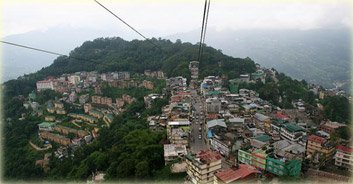 At an altitude of 1750m, Gangtok became the state capital in the mid 19th century and has undergone rapid Development since then. The downtown area is dominated by huge government buildings decorated with traditional Buddhist symbols. Gangtok is also a resting ground for people traveling to North Sikkim. Surrounded by Monasteries and Orchids, Gangtok is truly a traveler’s delight.
At an altitude of 1750m, Gangtok became the state capital in the mid 19th century and has undergone rapid Development since then. The downtown area is dominated by huge government buildings decorated with traditional Buddhist symbols. Gangtok is also a resting ground for people traveling to North Sikkim. Surrounded by Monasteries and Orchids, Gangtok is truly a traveler’s delight.
Overnight at hotel.
DAY 05: GANGTOK
Morning breakfast at the hotel and proceed for full day sight seeing in Gangtok.
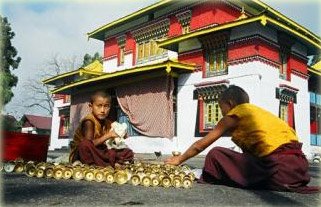 Rumtek Monastery: -24 Kms. from Gangtok is the awe -inspiring Rumtek Monastery, the world Dharma chakra Centre and the seat of His Holiness, the GyalwaKaramapa, who is the head of the Kagyupa order of Tibetan Buddhism. Behind the main monastery is the lavishly decorated KarmaeNalanda Institute of Buddhist Studies, which attracts students from the world over. Opposite the entrance to the Institute is a small hall featuring a beautiful jewel studded Chorten the Golden Stupa, which contains the ashes and remains of His Holiness the xvi GyalwaKaramapa. According to legend, it is believed that after years of meditation, the first Karamapa was said to have been visited by ten thousand fairies who came to congratulate him each of whom offered a strand of her hair as a gift. These were said to have been woven into a black hat, which was passed down and is still at the RumtekMonastery today. It is said that unless held on to by the wearer (who of course, cannot be anyone else but the Karmapa) or kept in a box, the hat would fly away.
Rumtek Monastery: -24 Kms. from Gangtok is the awe -inspiring Rumtek Monastery, the world Dharma chakra Centre and the seat of His Holiness, the GyalwaKaramapa, who is the head of the Kagyupa order of Tibetan Buddhism. Behind the main monastery is the lavishly decorated KarmaeNalanda Institute of Buddhist Studies, which attracts students from the world over. Opposite the entrance to the Institute is a small hall featuring a beautiful jewel studded Chorten the Golden Stupa, which contains the ashes and remains of His Holiness the xvi GyalwaKaramapa. According to legend, it is believed that after years of meditation, the first Karamapa was said to have been visited by ten thousand fairies who came to congratulate him each of whom offered a strand of her hair as a gift. These were said to have been woven into a black hat, which was passed down and is still at the RumtekMonastery today. It is said that unless held on to by the wearer (who of course, cannot be anyone else but the Karmapa) or kept in a box, the hat would fly away.
The Enchey Monastery: -Perched on a ridge above Gangtok, the Enchey Monastery is nestled within lush woods with a spectacular view of Gangtok town. Built in 1910 on the site of the hermitage of the great tantric saint, Lama DrutobKarpo, who was renowned for his powers of levitation, this monastery houses the monks of the Nyingmapa Order of Tibetan Buddhism.
Namgyal Institute of Tibetology: -Amidst a serene surrounding of oak, birch and ash lies the unique organization established in1958. Built in traditional style, the namgyalInstitute of Tibetology promotes research in Mahayana Buddhism and the language and tradition of Tibet. It has one of the world’s largest collections of rare books and manuscripts on Mahayana Buddhism. The Institute also has retail outlets where related books and commercially produced religious art and craft of Tibet can be bought.
Adjacent to the institute are two exquisite stupas, the Do DrulChorten, built to commemorate the victory of good over evil and the Jhang Chub Chorten, built in the memory of Thrukshik Rinpoche, an ardent devotee, a great spirtualist and interpreter of Buddhism. Near the Chorten are housed two giant statues of Lord Buddha and Guru Padmasambhava, also known as Guru Rimpoche, the patron saint of Sikkim.
Directorate of Handloom and Handicrafts: -This Directorate was set up to promote traditional Sikkimese art and handicrafts. Exquisitely carved wooden friezes, intricate bamboo work, along with beautiful hand woven carpets and handlooms are on exhibit here. Visitors can not only purchase these items here but also see the artisans at work. Among others, a favorite item here is the choktse a wooden table with carved panels that can be folded into a portable pack.
Overnight at Hotel
DAY 06: GANGTOK – KALIMPONG 80 KM/3 HOURS
Breakfast at the hotel and drive to Kalimpong.
KALIMPONG
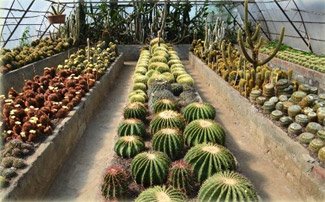 At an altitude of 1250m, Kalimpong location is ideal for a pleasant, relaxed getaway. Its clement weather has made Kalimpong orchids and gladiole well renowned.Up to the early 1700s, the Kalimpong area was part of the Sikkim raja’s domain. In the early 18th century, the Bhutan king also took it over. In 1865, after the Anglo-Bhutan War, it was annexed to Darjeeling. Scottish Missionaries came here in the late 1800s. The town thrived as a wool trading center with Tibet till 1950s. Today it’s a quiet hill resort and a haven for retired people.
At an altitude of 1250m, Kalimpong location is ideal for a pleasant, relaxed getaway. Its clement weather has made Kalimpong orchids and gladiole well renowned.Up to the early 1700s, the Kalimpong area was part of the Sikkim raja’s domain. In the early 18th century, the Bhutan king also took it over. In 1865, after the Anglo-Bhutan War, it was annexed to Darjeeling. Scottish Missionaries came here in the late 1800s. The town thrived as a wool trading center with Tibet till 1950s. Today it’s a quiet hill resort and a haven for retired people.
On arrival to Kalimpong transfer to the hotel for check in.
Afternoon city tour of Kalimpong.
Flower Nurseries: The climate of Kalimpong is ideal for the cultivation of flowers and plants. Kalimpong is famous for its nurseries which export exotice flowers like Amaryllis lilies, Anthuriums, Roses gerberas, Dahilias, Gladiolias as well as Orchids and Cacti.Zang Dog PalriFo-Brang Monastery – This is a fairly new monastery located in Durpin Dara, from here one can get an exclusive panoramic view of the town and surroundings. The prayer room inside the monastery is adorned with wall paintings and there is a rare three-dimensional mandala upstairs.TharpaCholing Monastery at Tirpai hill on route to Dr.Graham’s Home belongs to the Yellow Hat sect of Lamas to which the present Dalai Lama belongs.ThongsaGumpa: this monastery is of Bhutanese origin and built around 1692. It is the oldest in Kalimpong.The original structure was destroyed in the inter-clan wars before the British arrived.
ThongsaGumpa: this monastery is of Bhutanese origin and built around 1692. It is the oldest in Kalimpong.The original structure was destroyed in the inter-clan wars before the British arrived
Overnight in the hotel.
DAY 07: KALIMPONG– BAGDOGRA BY SURFAC & FLIGHT TO KOLKATA
After early breakfast at the hotel in time transfer to the Bagdogra to connect flight to Kolkata.
Meeting and assistance on arrival, further transfer to the hotel/
Overnight in the hotel.
DAY 08: KOLKATTA
 After breakfast city tour of Kolkata: Kolkata formerly known as Calcutta which changed to Kolkata in the year of 2001. Kolkata is the third largest Metropolitan city of India and capital city of state West Bengal. Kolkata was a Capital of India at British Raj till capital moved to Delhi in year 1912.Kolkata also known as City of Joy because of its rich culture. In Kolkata you will get mix culture of old and modern lifestyle. Visit the famous places of Kolkata – Victoria Memorial, Dakshineswar Kali Temple and other places.
After breakfast city tour of Kolkata: Kolkata formerly known as Calcutta which changed to Kolkata in the year of 2001. Kolkata is the third largest Metropolitan city of India and capital city of state West Bengal. Kolkata was a Capital of India at British Raj till capital moved to Delhi in year 1912.Kolkata also known as City of Joy because of its rich culture. In Kolkata you will get mix culture of old and modern lifestyle. Visit the famous places of Kolkata – Victoria Memorial, Dakshineswar Kali Temple and other places.
Overnight in the hotel.
DAY 09: DEPARTURE
In a time transfer to the international airport to board the flight for onwards destinations.
